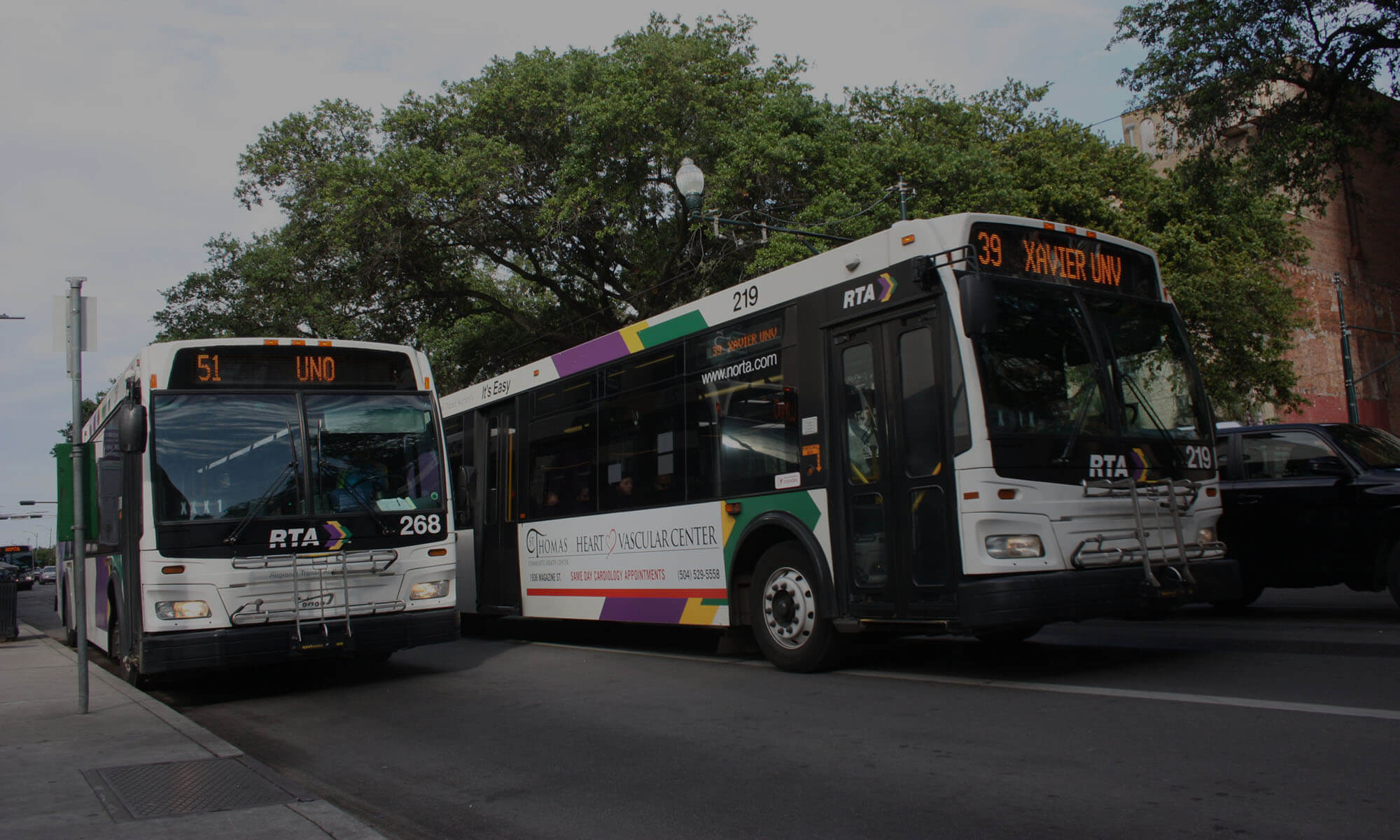Often when it comes to cities that are leading the way in public transit, we hear about large coastal ones like New York City, Seattle, or San Francisco. However, there are some smaller, less publicized, and unsung places that are pioneering innovative practices in public transit. Over Memorial Day weekend I traveled to Albuquerque New Mexico and was able to observe and experience some of the exciting things that the city is doing.
Albuquerque Rapid Transit (ART)
Like many cities around the world, Albuquerque decided to adopt a bus rapid transit system. Known as ART—Albuquerque Rapid Transit, the system began operating in 2019. Bus rapid transit broadly means a bus that operates more like a subway or rail system. Buses travel in their own dedicated lanes and stop at stations that are spaced out to improve speed and efficiency. For more on why dedicated bus lanes make sense, see RIDE’s article from March. In Albuquerque, the ART runs East to West through the heart of the city, connecting multiple neighborhoods and serving several transit centers. The stations are sleek and stylish, providing shade and easy level boarding for passengers.
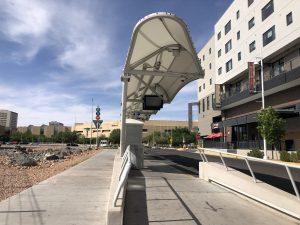
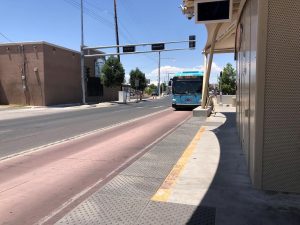
Zero fares!
Another exciting aspect of Albuquerque transit is that it is completely free to ride! All bus routes, bus rapid transit, and paratransit (known as Sun Van) are fare-free. This zero-fare policy was adopted as a pilot project beginning in January 2022. Behind the scenes, the policy was the result of efforts by advocates, community partners, and elected officials. The City Council initially approved $3 million to fund the project and is now planning to continue it through at least June 2023. From the transit rider’s perspective, things could not be simpler. When the bus arrives, riders simply get on board—no ticket, no pass to swipe. This facilitates smooth boardings and significantly speeds up travel times.
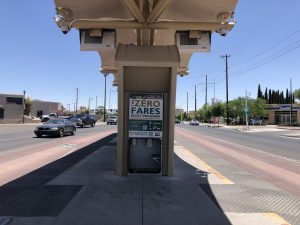
Regional Connectivity
Another inspiring aspect of Albuquerque transit is the regional connectivity. The city is connected to surrounding towns and cities by a commuter rail system known as the Rail Runner Express (yes, the train makes a “beep-beep” sound when its doors are closing). The train runs between Belen and Santa Fe, a distance of nearly 100 miles (a bit farther than New Orleans to Baton Rouge). In Albuquerque, the train stops at the transportation center Downtown which is connected to the ART and numerous fixed-route bus lines. Thus, the rail system, which currently offers full-day passes for just $2.50, is well-connected with the other transportation modes in the city. This means that travelers and workers can easily move across the city and the entire region.
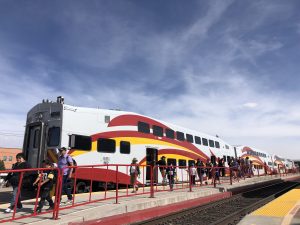
ADA—quick and easy
One final aspect to highlight is the subtle, but significant, accessibility considerations that one finds while moving around Albuquerque. It is clear that many accessibility features have been included to improve access to all users. For example, two features that are both practical and user-friendly are the level boarding at ART stations and automatic wheelchair securement system found on ART buses. The latter allows a wheelchair user like me to simply push a button which activates two automatic arms that lock the chair in place. This is much more efficient, and frankly more dignified, than the alternative where an operator must leave their seat and fasten a number of belts and hooks to secure a chair. In New Orleans, the lack of level boarding on streetcars means an operator must deploy an extremely slow lift and then manually secure a wheelchair which significantly slows down travel times.
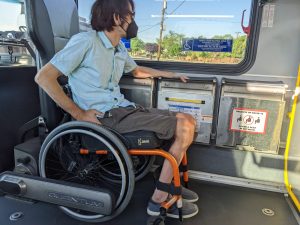
Albuquerque has not mastered everything
By highlighting these aspects of Albuquerque transit, I do not mean to suggest that the city has achieved perfection. Many challenges persist such as unequal and infrequent service in many parts of the city, concerns about equity and coverage in low-income and BIPOC communities, as well as many buses stops that lack shelters, exposing riders to the intense New Mexico sun. Nonetheless, the city, often pushed by local advocates such as Together for Brothers, provides many positive examples for cities like New Orleans to follow.
